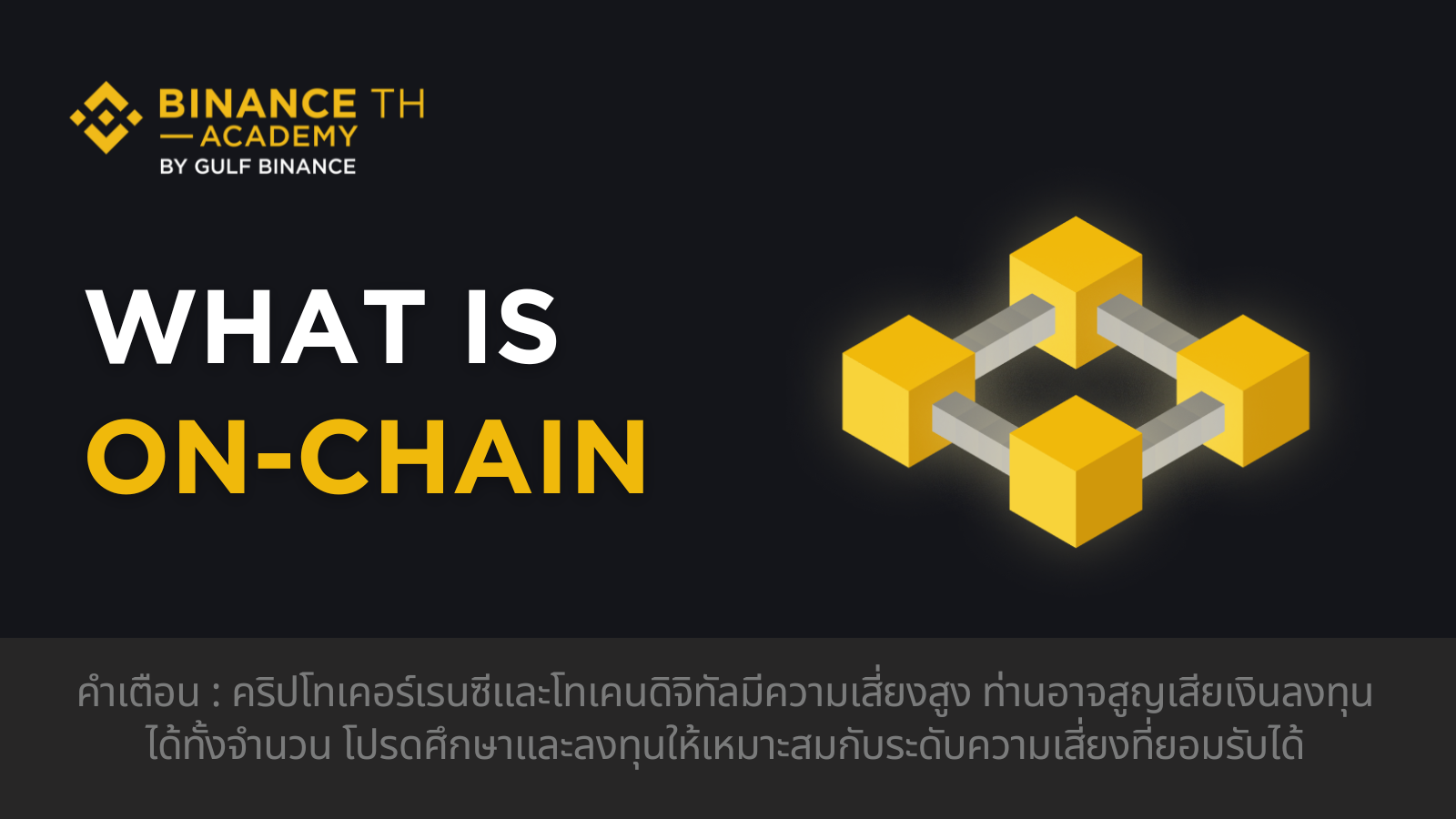What is On-Chain?

Recently, Howard Lutnick, U.S. Secretary of Commerce, discussed the idea of storing economic data such as GDP on the blockchain (On-Chain) to ensure transparency, verifiability, and 24/7 public access. In the crypto world, On-Chain generally refers to activities or transactions that occur directly on the blockchain, which acts like a decentralized ledger. All data is recorded permanently, transparently, and cannot be altered retrospectively due to decentralization. Additionally, the system operates continuously without breaks, including weekends.
Uses of On-Chain
On-Chain Transactions
One of the main functions of blockchain is to enable peer-to-peer transactions without relying on intermediaries such as banks or third parties.An on-chain transaction refers to the direct transfer of digital currency between participants, regardless of their location in the world, with settlement occurring in a short period of time. Every transaction is recorded on the blockchain in a transparent, verifiable, and secure manner, as it must be validated by the entire network through consensus mechanisms such as Proof of Work (PoW), Proof of Stake (PoS), and others.
Smart Contracts and On-Chain Execution
Smart contracts are self-executing agreements with conditions written in code. They can operate automatically and enforce rules 24/7 without intermediaries. On-Chain execution means the code runs directly on the blockchain, ensuring transparency, verifiability, security, and immutability. Users can trust that contracts will not be tampered with, as long as the network is sufficiently decentralized and the code is error-free.
Tokenization on the Blockchain
Tokenization converts real-world assets (RWA) or rights into blockchain tokens, representing value or ownership. These can range from real estate and artwork to ownership rights in decentralized applications (dApps). On-Chain tokenization ensures ownership and transfers are transparent, verifiable, secure, and less prone to forgery, increasing trust in transactions.
On-Chain Data Storage
Some blockchains, such as ICP and Avalanche, which excel at data distribution, can store various types of data beyond smart contracts and transactions, including economic figures, reports, personal data, or assets. This enables real-time, transparent, and secure access. On-Chain storage also allows systems to operate continuously 24/7, reducing risks of data tampering. When applied to economic data such as GDP or key statistics, it provides government agencies and the public with timely and reliable access, reducing delays in data dissemination.
Moreover, it can be practically applied in many areas, such as DeFi, which enables access to transparent and auditable financial tools; supply chains with clear and traceable product journeys; secure digital identity verification; and borderless fundraising accessible worldwide, among others.
Differences Between On-Chain and Off-Chain
On-Chain activities occur directly on the blockchain, while Off-Chain refers to activities outside the blockchain.
1. Speed and Scalability
On-Chain: All transactions must be validated by the entire network, which can slow down processing and limit scalability.
Off-Chain: Some processes are handled outside the main chain, allowing faster transactions and better scalability.
2. Costs and Fees
On-Chain: Requires network fees based on computational resources used.
Off-Chain: Reduces load on the main chain, lowering costs and fees.
3. Privacy and Security
On-Chain: Transparent, secure, and immutable.
Off-Chain: Does not offer the same level of decentralized security; privacy and security depend on the system architecture.
4. Data Storage
On-Chain: Data is recorded on every node, ensuring transparency, verifiability, and permanence, but it consumes more storage.
Off-Chain: Primary data is stored off-chain, generally secure, faster, and can handle larger volumes. Many applications use encryption and only store transaction summaries or hashes On-Chain via smart contracts (Hybrid approach).
Conclusion
On-Chain and Off-Chain have distinct advantages and disadvantages. On-Chain is suitable for tasks requiring high security and real-time updates but consumes more storage. Off-Chain relies on trust and human management, cannot run fully 24/7, but uses less space and supports more complex applications.
Howard Lutnick’s concept is compelling as it allows the public to access transparent, real-time data. Current optimization strategies, such as Hybrid On-/Off-Chain approaches, hashing, smart contracts, data size reduction, and decentralized subnets make Some protocols can make fully On-Chain solutions more efficient and secure.
